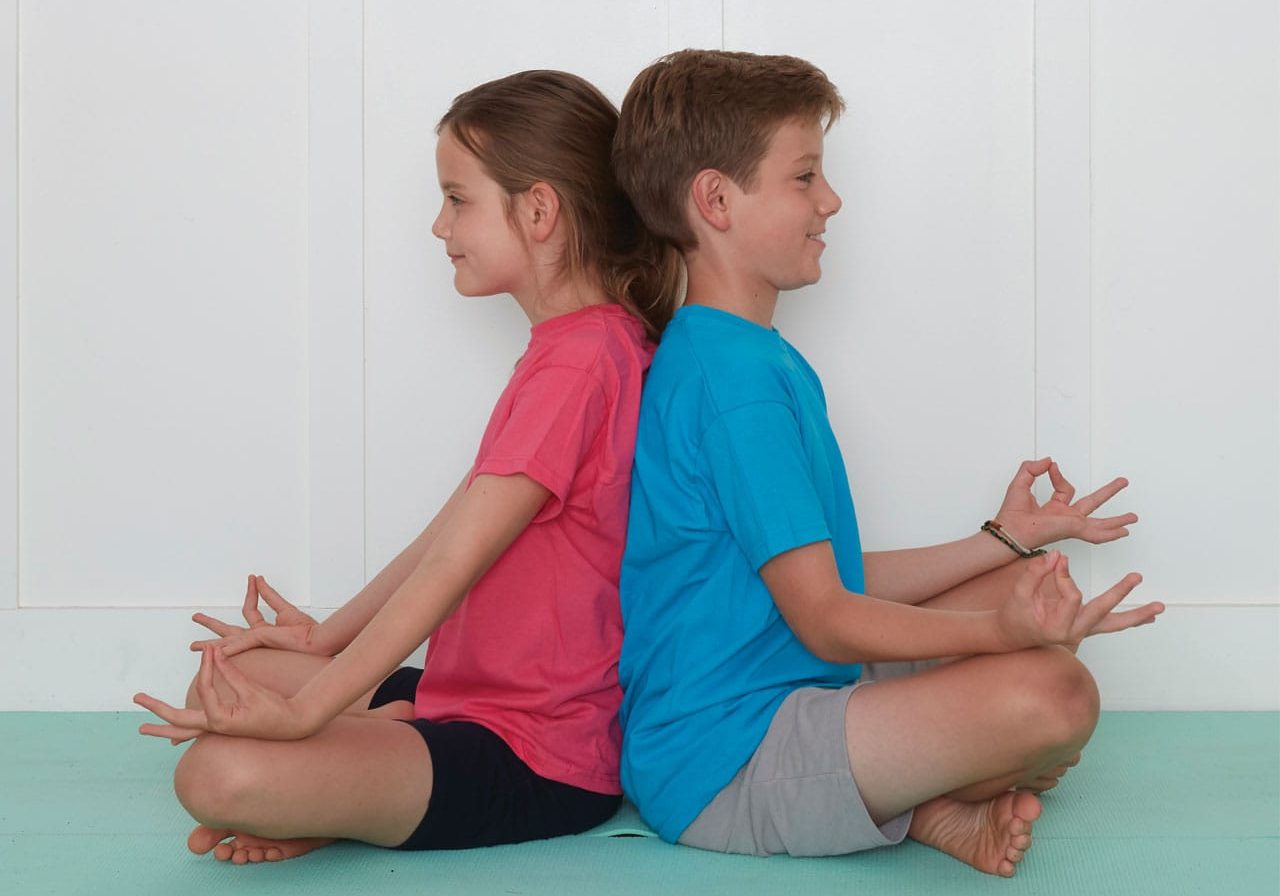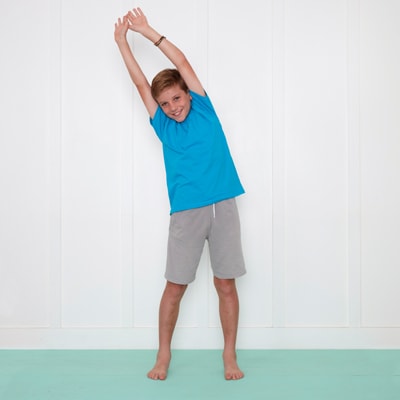
Mindfulness training
Engaging children and teens with mindfulness. By Christiane Kerr
Teaching children and teens about how their brain processes different emotions can give them some understanding of how mindfulness and yoga skills can be helpful to them, particularly when they are stressed or upset. There are three areas of the brain that are important to mention: the hippocampus, the amygdala and the pre-frontal cortex.
Hippocampus: this is involved in the forming, organising and storing of new memories as well as connecting certain sensations and emotions to these memories. For example, when you smell a certain scent, and it brings a memory straight into your head. It also provides contextual information to the amygdala, so if you have experienced something similar in the past, then you may have heightened anxiety to the present situation. Research suggests the hippocampus is fully developed by around two years of age, however, the volume of the hippocampus increases during puberty which helps our memory to improve.
Amygdala: this is made up of a collection of cells within the centre of the brain and it plays an important role in emotion and behaviour. It is best known for its role in processing fear. When we are exposed to a fearful stimulus the information of that stimulus is immediately sent to the amygdala which triggers our fight or flight response. This is an automatic reflex and sometimes the amygdala is unable to differentiate between actual and perceived threats so it can also be triggered by our worries or negative thoughts and emotions.
Pre-frontal cortex: this is where we need the help of other areas in the brain, like the pre-frontal cortex to help regulate the amygdala and allow us to make a conscious decision on how we should respond. When we are triggered and perceiving a threat, signals bypass the pre-frontal cortex and are processed directly by the amygdala causing us to feel stress and anxiety.
Mental development
The amygdala is fully developed from birth as it’s a key part of our brain that evolved to keep our ancestors safe from possible predators. However, the amygdala does increase in volume during puberty and becomes more active leading to impulsive and emotional behaviour.
At this moment in time the prefrontal cortex hasn’t developed enough to regulate the amygdala, so teenagers are more likely to be reactive, aggressive and anxious.
The pre-frontal cortex is at the front of our brains and is responsible for functions such as planning, analysing and decision making. It’s one of the last areas of the brain to fully mature, often not until we are 25. The vast majority of pre-frontal cortex development happens between the ages of five to 12, which is why children of this age become better at regulating their emotions, controlling impulses and become more socially aware.
The pre-frontal cortex is responsible for a set of cognitive processes called executive functions. These are skills that help us to monitor and regulate different kinds of cognition and behaviour to achieve our goals. They allow us to do things like control our attention and impulses, regulate our emotions, plan ahead and problem solve. Executive function skills are continuously improving throughout adolescence.
Mindfulness training
Emotional regulation is a critical life skill that can facilitate learning and improve educational outcomes. Emotion regulation abilities are associated with areas in the pre-frontal cortex that mature late in development. Children who struggle with emotion regulation skills are at increased risk of physical and mental health disorders as adults and often have difficulties maintaining effective social relationships. Research has shown that mindfulness can be beneficial for emotion regulation, resilience and the executive function of children from seven to 12 years of age.
One study found that children aged four to six years showed greater improvement in self-regulation, were more social and less hyperactive after a mindfulness course. During mindfulness training, many self-regulatory skills and executive functions are practiced and taught, for example, internal attention focus exercises, like breath awareness, or external object focus exercises such as focusing on a small object like a raisin.
These exercises practice being aware of our attention and focus and when this drifts off, children are able to practice moving it back to the task at hand without judgement. The ability to detect when the focus of our attention has diverted towards a distractor is a key skill which is trained during mindfulness practice and can be very useful in everyday life, particularly in the classroom.
Teaching children to have an awareness of their breathing and their heart rate can also help them to identify when they may be feeling stressed or anxious and therefore allow them to do an activity that helps them regulate or alter their mental state. It may be that a thought triggered the amygdala and bypassed the pre-frontal cortex. Controlling breath can help us to take back control from the amygdala and give us time to rationalise thoughts and divert our attention away from the stressful stimuli to the pre-frontal cortex.
One thing to be aware of when discussing the benefits of mindfulness is that children, and particularly younger children, can struggle to transfer mindfulness skills outside of sessions or in a different context. Getting parents and teachers to learn mindfulness skills can help to introduce them into the home or at school and in all areas of life around mindfulness sessions.
Some of the most effective mindfulness interventions for children with anxiety or attention difficulties have been with both parents, teachers and children.
Mindfulness exercises
Here are two exercises that can help both children and adults connect with the breath and come back into the present moment.
Press Pause & Breathe
This exercise is great for grounding and bringing us into the present moment.
- You can do this sitting or standing. Bring your attention to your feet. Have them hip distance apart and parallel, like the pause button on your TV remote. Bend your knees and press your feet into the ground.
- Slowly straighten your knees and pause, let your whole body be very still.
- Take five breaths here. Big breath in, big breath out.
- Check in – how does that make you feel?
Stretch & Count
When there are big emotions around, moving our bodies can literally help shift or shrink those big feelings, helping us to deal with them in a more helpful way. You don’t need much space to do this and it can be done sitting or standing.
- Stand or sit up straight and have three deep breaths.
- Interlink your fingers in front of you and stretch them up, palms facing towards the sky as you count one.
- Keeping your fingers interlinked, place your hands on your head, count two.
- Place your hands on your chest, count three.
- Place your hands on your tummy, count four.
- Bend down and place your hands to the ground, count five (you can bend your knees if you need to).
- Repeat two or three times, then check in and see how you feel.
Christiane Kerr is the founder of Calm for Kids (calmforkids.com)





